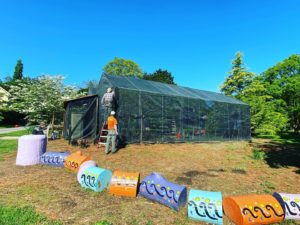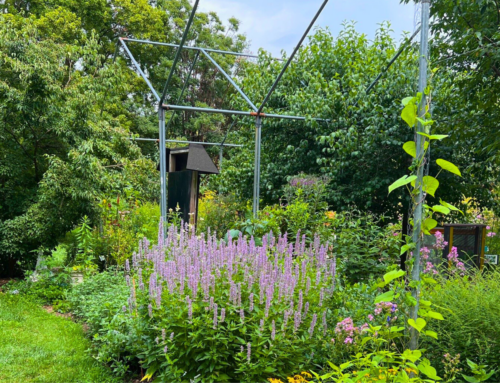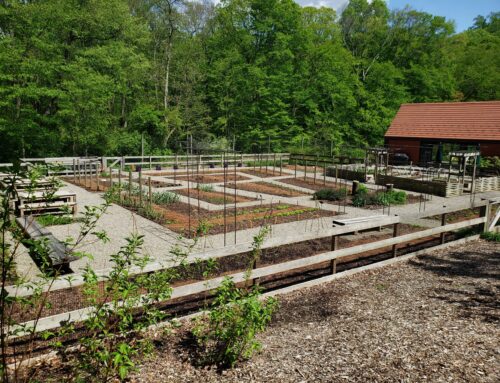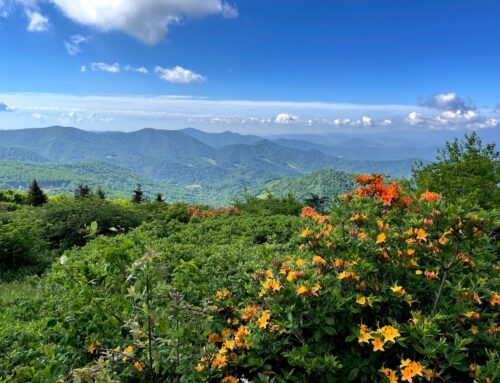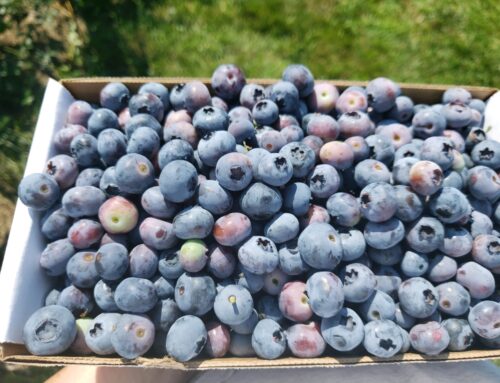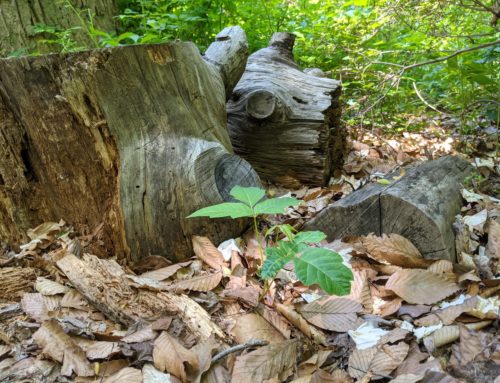We are approaching summer, and whether you are a grower of vegetables, flowers, or both, a lot of planning went into what will hopefully become a plentiful garden, greeting you each day with the anticipation of newness and wonder. As you meander through the garden to assess the priorities for the day, you are stopped at the site of tiny yellow creatures nestled together along the stem of a plant. Taking a closer look, you realize aphids are sucking the sap from some of your plants. They seem to especially like the roses, milkweed and radishes.
Aphids have a lot going for them. Much of the sweet sap they consume is excreted and enjoyed by ants who in turn help protect the aphids. Female aphids are capable of virgin births – no males are needed. Add to this the fact that they give birth to live young and you soon have a rapidly multiplying aphid population in your garden. What to do? Last summer I decided to wait, watch and learn. I wasn’t going anywhere, and spending time in my pollinator garden was always a pleasure.
My concern grew as the aphids multiplied quickly. This was also a lesson in patience and I wasn’t sure I would pass the test. Then I noticed ladybugs nearby. Another plant had lovely green lacewing eggs beneath a few leaves. The larva of both of these insects consume aphids by the hundreds. I was amazed that help had arrived so quickly. I began to look under more leaves and found a cluster of orange ladybug eggs. How do you know if these warriors are in your garden? This is where the learning starts. Take pictures, use apps and learn from various websites. Below you will find a collage of the four stages of the lady beetle as it develops from egg, larvae, pupae to adult. Start looking more closely, and you might find some of these alligator-looking creatures scurrying along your stems and leaves as they look for their next meal. Just because they look mean and scary doesn’t mean they are, unless you are an aphid. Green lacewing eggs are incredible, like white ornaments hanging from under your leaves as you can see in the photo on the right.
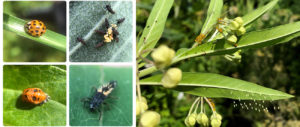
There is much more going on in the garden, much of it not part of the pollination process. Paper wasps drink from the birdbath. Are they thirsty or do they need the water to mix with tiny scrapings of dead wood to make their papery nests? As I watch the wasps among the plants, I now notice their intentional behavior of methodically searching under leaf after leaf. Their young larvae are meat eaters and a spider, fly or soft-bodied caterpillar will make a wonderful meal. They seem especially attracted to milkweed, often rewarded with a small caterpillar.
By August, praying mantises are easily spotted. I’ve always seen the large Chinese praying mantis in my garden, but for the first time, I discover a smaller native Carolina praying mantis. They patiently wait and watch, situating themselves in the perfect spot on top of the goldenrod flowers, ready to capture their next meal. Insect food is abundant in the pollinator garden as I consider renaming it an ‘Insect Garden’.
You may have noticed Tyler is redesigning the gardens at the Butterfly House along with some other improvements. One reason is to provide more opportunities for visitors to watch and learn. The outside garden plants, such as figwort and penstemon were chosen to attract pollinators including bees, wasps, flies, beetles, hummingbirds and butterflies, along with welcoming a variety of other insects to this community – those that have important, though perhaps less familiar, roles. Other plants such as sweet alyssum and nasturtium were selected since they act as a trap crop for aphids or leaf miners. The net is up and most of the new plants are in the ground, thanks to our dedicated team of garden volunteers. We are a few weeks away from having butterflies in the house, but there is still plenty to see, so please stop by.
We’d love for you to join us in the gardens this year as we discover the intricacies of these diverse communities! Our volunteer Garden Ambassadors will be happy to help you see and understand the finer details regarding the relationships between the plants and insects. People are an integral part of Tyler’s gardens as we work, learn and enjoy what they offer. Each day brings new curiosities, whether it is a new scent, flower shape, insect activity or an engaging conversation.
See you at Tyler!
Recommended Website for insects:
Learn about the iNaturalist app:
